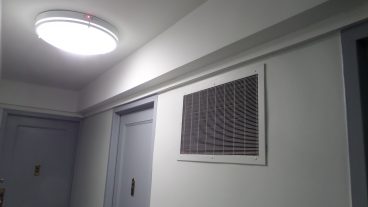LL88/09 Lighting and Sub-metering, as amended by LL132/16 & LL134/16
Local Law 88/09 Lighting Upgrades and Submetering, as amended by Local Law 134/2016 requires lighting upgrades in non-residential buildings and non-residential spaces within residential buildings that are 25,000 square feet of more (i.e. ground floor retail, professional office, etc.) but excludes residential dwelling units; LL88 requires the installation of electric sub-meters in commercial tenant spaces greater than 5,000 square feet in certain buildings.
See our Lighting Upgrade Case Studies
Lighting Upgrades
Upgrades apply to base building and non-residential spaces within multifamily buildings (i.e. ground floor retail, professional office, etc.). Due to the update under LL 134, all common areas must be upgraded.
Building owners must upgrade their lighting systems to current NYC Energy Code Standards:
- Interior lighting power
- Lighting controls
- Exterior Lighting
- Tandem Wiring
- Exit Signs (see the LED exit sign below)
This law excludes occupancy group A-3 within Houses of Worship.
The deadline is January 1, 2025 and the building owner must file a report certified by a Registered Design Professional that this work has been completed.
See the Comparison Chart LED Lights vs. Incandescent Light Bulbs vs. CFLs.

LED BI-LEVEL LIGHTING WITH BATTERY BACK-UP IN THE CORRIDORS

LL88/09: LED exit sign uses much less energy than Incandescent bulbs.
Sub-metering
Under LL88/09 as amended by LL132/2016 Electrical meters or sub-meters must be installed in commercial tenant spaces or floors over 5,000 square feet.
The deadline is January 1, 2025.
Tenants must be provided with a statement of monthly electrical usage.
This sub-meter is in a residential cooperative that was master metered for electricity and voluntarily sub-metered each residential tenant. Now the tenants can see exactly how much electricity they are using in real time.

Sub-metering reduced residential tenants’ electrical consumption by 30%.
